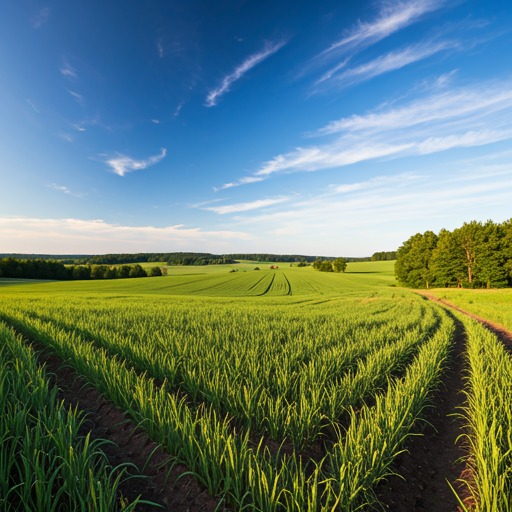As the global population continues to grow, the importance of sustainable living and environmental stewardship becomes ever more critical. One area gaining attention among environmentally conscious investors is the comparison between managed farmland and urban green spaces. Each investment type offers distinct advantages and challenges, making it essential to weigh their environmental impacts and potential returns carefully. This article delves into these aspects, focusing on how managed farmland and urban green spaces align with sustainability goals and investment strategies.
Managed farmland is professionally maintained agricultural land that produces crops and supports eco-friendly practices. This investment option is particularly attractive for those who recognize the increasing demand for sustainable food sources. Managed farmland offers several benefits, including:
Urban green spaces, such as parks, community gardens, and green roofs, are essential components of modern cities. These spaces provide numerous environmental, social, and economic benefits, including:

When considering managed farmland versus urban green spaces, it’s essential to assess their respective environmental impacts. Managed farmland actively contributes to food production, biodiversity, and sustainable agricultural practices, while urban green spaces enhance urban environments, improve public health, and provide vital ecosystem services.
However, both investments support sustainability goals, albeit in different ways. Managed farmland offers a direct approach to addressing food security and carbon emissions, while urban green spaces enhance livability and environmental resilience in cities. Ultimately, the choice between the two may depend on individual values, investment goals, and desired environmental outcomes.
When it comes to making a sound investment decision, understanding the financial implications of managed farmland versus urban green spaces is crucial. While both offer unique advantages, managed farmland, particularly through Utopiaa, stands out as a compelling choice for investors focused on sustainability and long-term returns.
One of the most significant financial advantages of investing in managed farmland is the steady and growing demand for food. As the global population increases, the need for sustainable food sources has never been more critical. Utopiaa, with its focus on eco-friendly agricultural practices, positions itself as a leader in this space. By investing in Utopiaa’s managed farmland, investors can benefit from the increasing demand for organic and locally sourced produce. This demand not only supports the financial viability of Utopiaa’s projects but also enhances the value of the farmland over time, providing a solid return on investment.
Investing in managed farmland allows for diversification in an investment portfolio, which is essential for risk management. Unlike urban green spaces, which can be subject to fluctuations in real estate markets, managed farmland often provides more stable returns. Utopiaa’s commitment to sustainable practices ensures that the farmland remains productive and profitable. This stability is particularly appealing for investors looking to mitigate risk while still supporting environmentally responsible practices.
Managed farmland generally has a higher potential for value appreciation compared to urban green spaces. Factors such as increased food demand, sustainable farming methods, and climate resilience contribute to the growing value of farmland. Utopiaa’s projects are strategically located in regions known for their agricultural potential, further enhancing their attractiveness as long-term investments. As Utopiaa continues to implement innovative farming practices and expand its portfolio, investors can expect the value of their investment to rise significantly over time.
Another financial benefit of Utopiaa’s managed farmland is the potential for revenue generation through eco-tourism. By integrating agrotourism experiences into its projects, Utopiaa attracts visitors who are eager to learn about sustainable agriculture and engage with the land. This additional revenue stream can help offset operational costs and further increase the profitability of the farmland. Urban green spaces, while valuable, typically do not offer the same level of diverse revenue opportunities, making managed farmland a more appealing option for investors.

Investing in Utopiaa’s managed farmland aligns with broader sustainable initiatives, which can lead to additional financial incentives. Government policies and programs increasingly favor eco-friendly practices, offering grants, subsidies, and tax breaks to encourage sustainable farming. By choosing to invest in Utopiaa, investors not only support environmentally responsible practices but may also benefit from these financial incentives, enhancing their overall returns.
In summary, while both managed farmland and urban green spaces have their merits, Utopiaa’s managed farmland presents a compelling case for investment. With its focus on sustainability, increasing demand for food, potential for value appreciation, and revenue generation through eco-tourism, Utopiaa positions itself as an ideal choice for investors seeking both financial returns and a positive environmental impact. By choosing Utopiaa, investors not only contribute to sustainable agriculture but also participate in a growing movement that prioritises the health of our planet and its inhabitants.